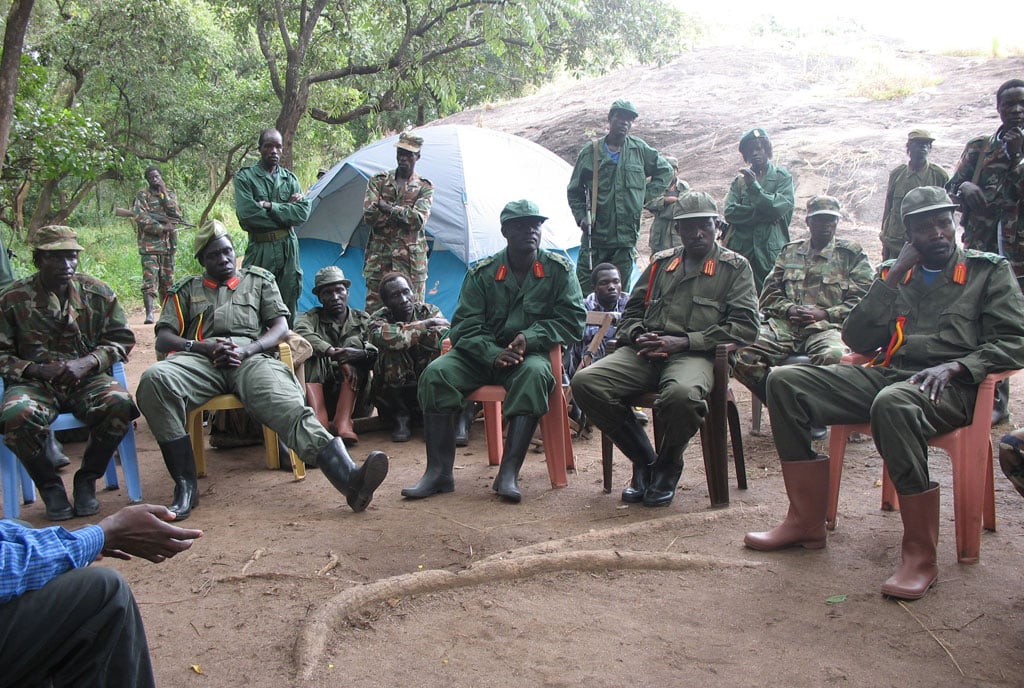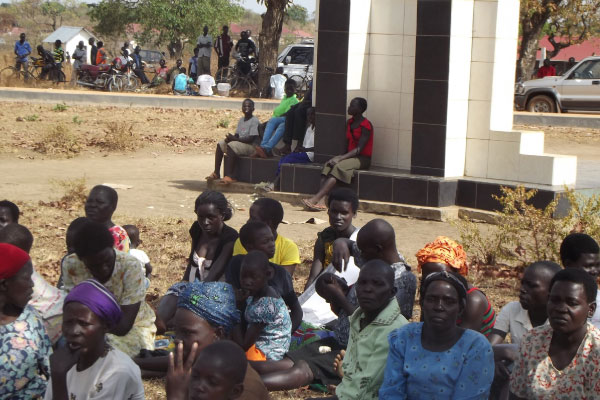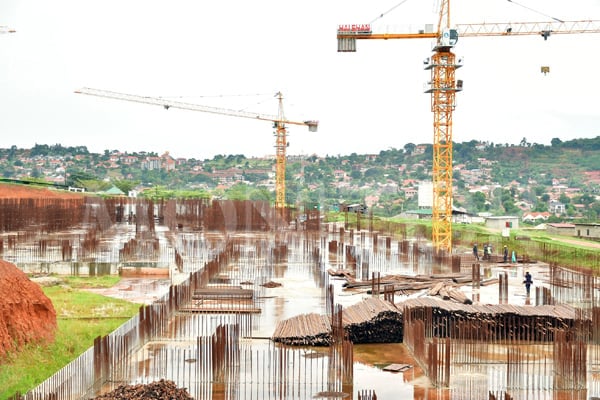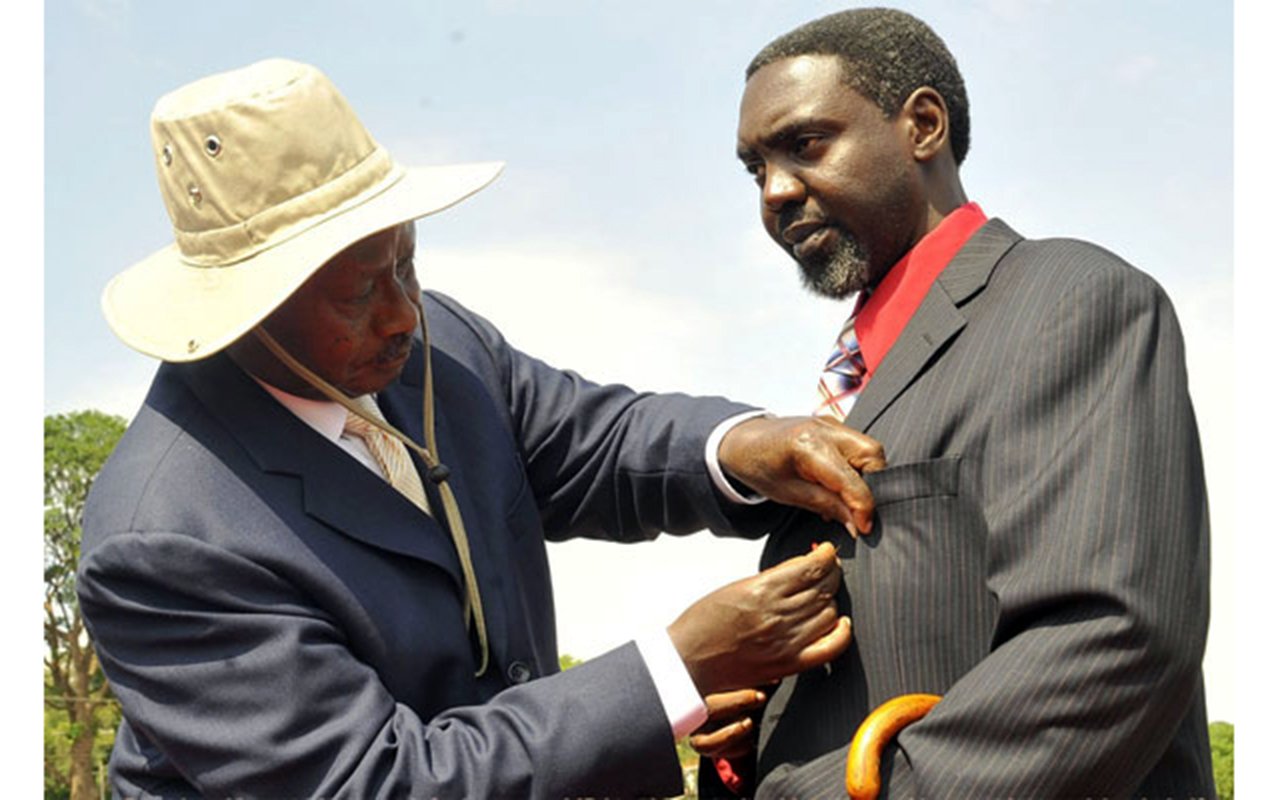Prime
Questions linger 20 years after Barlonyo Massacre

Sitting L-R: LRA leaders Caesar Acellam, Opok, Ocan Bunia, Okot Odhiambo and Joseph Kony in Garamba Forest during the peace talks in 2006. PHOTO/ FILE
What you need to know:
- In addition to 237 people who were killed in the camp, local officials counted another 100 killed outside the camp.
- About 50 people were burnt beyond recognition and buried in a mass grave.
On the afternoon of February 21, 2004, rebels of the Lord’s Resistance Army (LRA) descended on a quiet internally displaced persons’ (IDP) camp next to the River Moroto and massacred an estimated 300 people in what has been documented as one of the most devastating attacks on civilians during the rebellion in northern Uganda.
The rebels are said to have stormed the IDP camp at around 5pm.
The rebels were under the command of Okot Odhiambo, who was the alleged deputy army commander of the LRA. He also doubled as the commander of the Trinkle and Stockree Brigades of the rebel outfit.
Odhiambo was one of the five LRA commanders, including Joseph Kony and Dominic Ongwen, for whom the International Criminal Court (ICC) issued warrants of arrest in October 2005 for crimes against humanity and war crimes committed in northern Uganda since July 2002.
The charges
The charges against him included two counts of crimes against humanity and eight counts of war crimes.
The former include murder, enslavement and the latter category include charges of intentionally directing an attack against a civilian population, pillaging and forced enlisting of children.
He, however, never stood trial. The ICC terminated proceedings against him on September 10, 2015, upon receipt from authorities in Kampala of forensic confirmation that he had died.
DNA testing on a body that was exhumed by the authorities in March 2015 from a site 50kms northeast of Djemah in the Central African Republic confirmed that he had died in October 2013. The authorities had pursuant to the test issued a certificate certifying his demise.

In this file photo taken on December 06, 2016 shows Dominic Ongwen, a senior commander in Uganda's Lord's Resistance Army (LRA), looks on at the International Criminal Court (ICC) in The Hague. PHOTO/AFP
Some eyewitness accounts have since indicated that Ongwen, another LRA commander who was indicted by the ICC and has since been tried and convicted, also participated in the massacre.
Diabolical order
“Kill every living thing,” Odhiambo reportedly ordered.
That set the stage for about three hours of mayhem. Hundreds were killed in cold blood.
“Many were burned alive inside their homes, hacked, stabbed, clubbed and shot. The bellies of pregnant women were slit open, with their babies thrown into the fires. Those who were not killed were abducted and marched north into Acholi land where many died in captivity,” the Justice and Reconciliation Project’s 2009 report on the Barlonyo massacre read in parts.
Rebels ordered some of those who had survived the initial attack to return to their grass-thatched huts before setting them alight.
About 50 people were burnt beyond recognition and buried in a mass grave.
Eyewitness accounts indicate that some of those who tried to flee were either shot in the back, bludgeoned or hacked to death by clubs or machete-wielding rebels.
The actual number of those who died may never be known.
“In addition to 237 people who were killed in the camp, local officials have counted another 100 killed outside the camp,” Mr Andrew John Timpson, then head of the UN Office for Coordination of Humanitarian Affairs sub-office in Gulu, told the Integrated Regional Information Networks (IRIN).
The temerity and barbarity of that massacre was perhaps best captured by Mr Timpson.
“If these figures are correct, then this was a staggering attack, worse than any other attack in the history of the war,” he added.
Until that fateful evening in Barlonyo, Atiak where some 240 people were herded into a corner and shot dead, had been the place with the highest number of civilians that had been killed in that war.
Questions linger
Whether Ogwen did or did not participate in the attack is not the only question that has remained lingering since the attack.
Questions about how the rebels could have moved into the area undetected and carried out their diabolical mission remains a major talking point.
The rebels are said to have overrun a small contingent of UPDF soldiers and the 35 Amuka Boys – a group of civilians who were drafted into the anti-rebel fight – before entering the camp that was home to about 4,800 IDPs.
There are questions about the numerical strength of the army at the time of the attack.
“The LRA came in two groups and surrounded the camp and started shooting at the soldiers, who were very few. The soldiers were overpowered and ran away,” a community member told the Justice and Reconciliation Project.
Maj Shaban Bantariza, who was the spokesperson of the army at the time, pointed to an imbalance in terms of firepower and training available to the government forces at the time.
“The rebels had superior weapons. The Amuka have not yet had the training to use similar firepower. They were out-armed,” Bantariza said.
Demands for an inquest
According to the report, ‘Kill Every Living Thing: The Barlonyo Massacre’, a 2009 documentation of the massacre by the Justice and Reconciliation Project, many of the survivors of the massacre have a firm conviction that the army slept on the job.
“Division commanders and senior ranking officials in charge of the security and military protection of the camp at the time of the massacre should be investigated,” the report says.

Survivors want those responsible to be brought to account for their actions.
“Officials who either directly or indirectly violated and neglected their duty to protect the displaced persons in Barlonyo camp should be held individually or institutionally responsible… Victims and perpetrators should be brought together to testify so that there is a guarantee of non-repetition as well as the identification and possible punishment of those responsible,” the report says.
Monument welcome but…
Research carried out by the Truth and Justice Project revealed that whereas most of survivors warmed up to President Museveni’s offer to erect a monument in memory of those who perished during the attack on the camp, the monument has fallen short in terms of telling the real story of the massacre.
They demand that the number of persons identified on the tombstone be revised to reflect the truth numbers; that the remains of persons killed in the surrounding bush and along the River Moroto after abduction be recovered and given proper burial; that the names of those who were killed be listed in a public monument and; that a museum be created to preserve the story of Barlonyo for future generations.
Outstanding demands
The community wants government and stakeholders to come together to give material and symbolic reparations, including cash and construction of a memorial school, nursery, bridge, hospital and church.
They also think that a fence around the mass burial site and creation of a small fund to maintain the memorial and; creation of a fund for the education and welfare of those who were orphaned by the massacre will go a long way in healing some of the pain and trauma that many of them still feel.
Other demands included the creation of a fund to sponsor annual memorials; provision of medical care for those who were left disabled by the events of that day and; the creation of a fund to support women who have since been rejected by their husbands on account of having been left disfigured by the events of February 21, 2004.
Whether government and other stakeholders will come up to address those demands remains to be seen, but the community thinks that if addressed, it will help exorcise the ghosts from the harrowing events of that evening.
Demands
Research carried out by the Truth and Justice Project revealed that whereas most of survivors warmed up to President Museveni’s offer to erect a monument in memory of those who perished during the attack on the camp, the monument has fallen short in terms of telling the real story of the massacre.

President Yoweri Museveni speaks during the 41st Tarehe Sita anniversary celebrations in Mbale Febraury 6, 2022. Photo | PPU
Survivors demand that the number of persons identified on the tombstone be revised to reflect the truth numbers; that the remains of persons killed in the surrounding bush and along the River Moroto after abduction be recovered and given proper burial.




